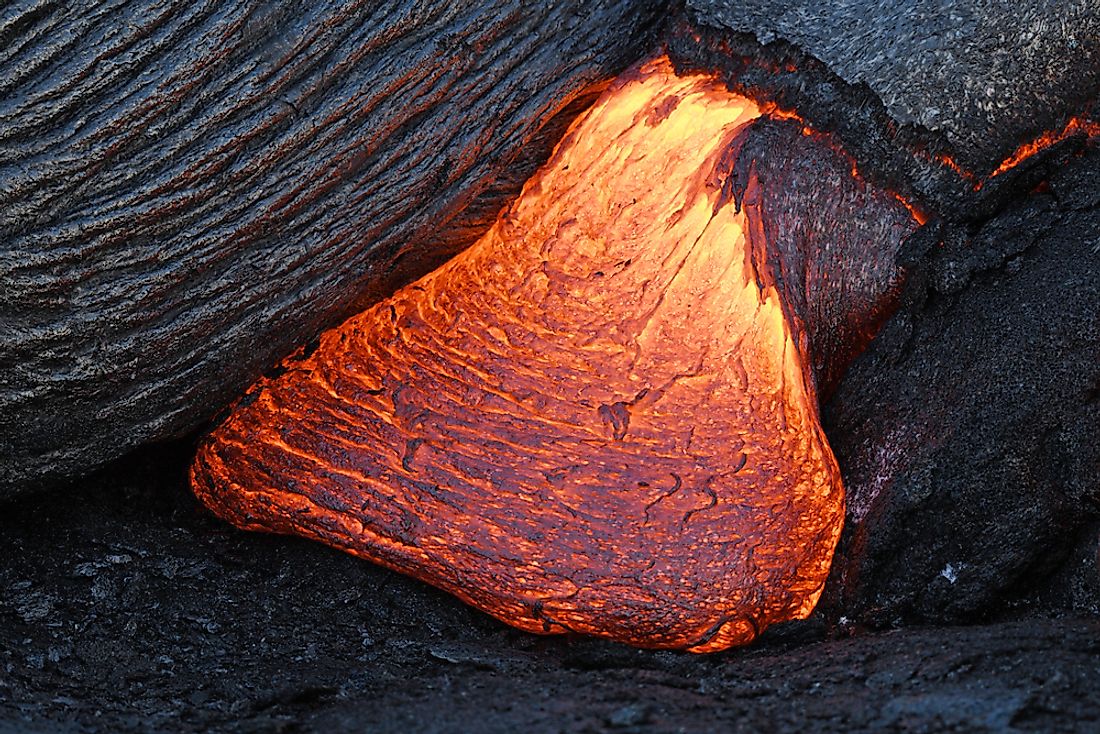What is Magma?

Magma is a mixture of molten and semi-molten rocks, crystallized minerals, solids, and dissolved gases. Magma is found below the surface of the earth. Researchers also believe that magma exists on other terrestrial planets in and beyond our solar system. When magma is ejected to the surface through volcanicity it is known as lava. When it cools into solid, it is known as igneous rocks. The temperature of magma is between 1,292° and 2,372° Fahrenheit.
How Is Magma Formed?
The planet is divided into three layers: the core, the mantle, and the crust. Magma is formed in the lower part of the crust but above the mantle. The difference in structural formation, pressure, and temperature in the crust and the mantle allows magma to form in several ways.
Decompression Melting
The formation of magma through decompression melting involves the movement of the earth's mantle. The movement of the mantle creates lower pressure points that experience low melting point. The rocks in this section melt to form magma. This process of magma formation is common in divergent boundaries where the separation of tectonic plates occurs.
Heat Transfer
Magma is also created when hot liquid rock is forced from the highly pressurized core to the crust. The liquid rocks lose heat to the surrounding rocks which also melt in the process. The formation of magma by heat transfer also occurs at convergent boundaries when tectonic plates crash into each other. When the denser plate subducts below the less dense plate, hot rocks from below rises into the cooler areas above the subducting plate resulting in the formation of magma.
Flux Melting
The formation of magma by flux melting occurs when carbon dioxide and water are added to rocks.These two compounds significantly reduce the melting point of rocks resulting in the formation of magma in places that it would have otherwise existed as igneous rocks.
Types of Magma
Magma contains a mixture of gases and simple elements. Silicon and oxygen are the most abundant; geologist, therefore, define magma in terms of the silica and gas content, viscosity, and temperature.
Mafic Magma
This type of magma has low silica content but higher contents of magnesium and iron. It also has a low content of gas and viscosity. Its temperature is relatively high at between 1,832° and 3,632° Fahrenheit. Mafic magma does not erupt explosively but it instead flows out of volcanoes and moves quickly on the surface. It turns into basalt when it cools.
Intermediate Magma
This type of magma has a high gas and silica content. Its temperature is between 1472° to 1832° Fahrenheit resulting in a higher viscosity than mafic magma. Because of the high viscosity, intermediate magma builds up in magma chambers below the surface before exploding violently as lava.
Felsic Magma
This type of magma has the highest silica and gas content. It also has the highest viscosity because of the low temperatures of between 1,202° and 1,472° Fahrenheit. Chambers of felsic magma trap gas bubbles that result in massive explosions that blow peaks off mountains.











